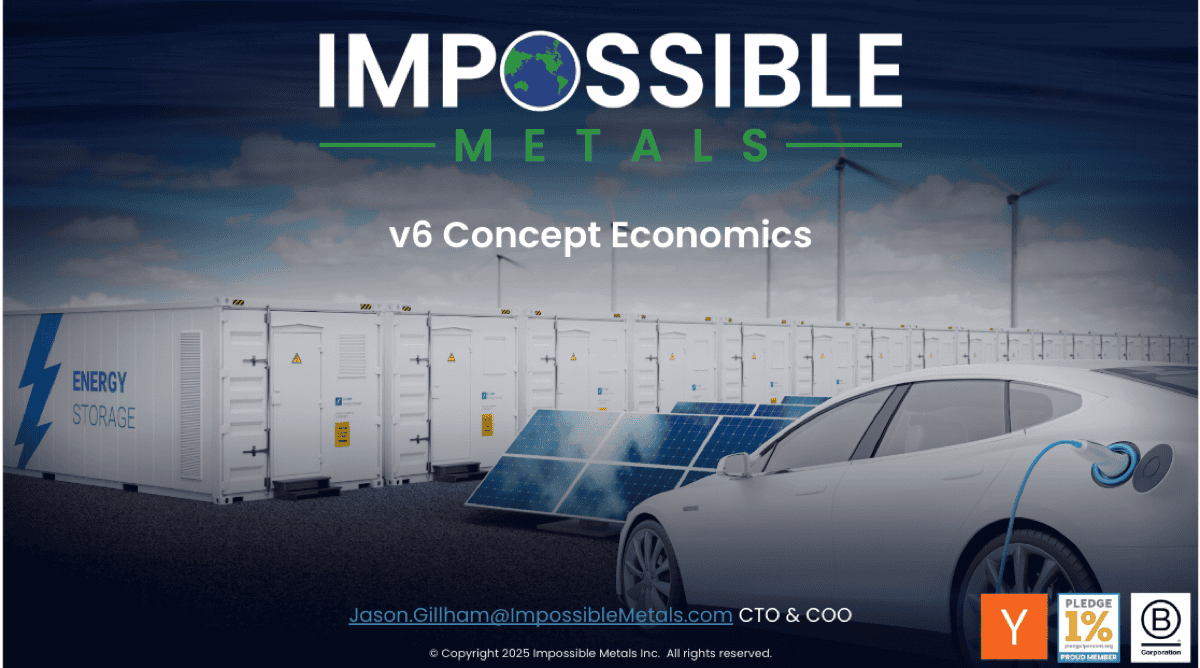On Friday, March 21, I had the pleasure of hosting a webinar to present our latest version of our concept economic model (v6). This model is a step forward in refining our understanding of the economic and operational parameters for the selective harvesting of polymetallic nodules.
-
- Webinar Recording:
- Associated Slides: https://docs.google.com/presentation/d/13w_RYyhDZSGUjttbUrHBa3jvesm7ddvY-3DnAlfT72Q/edit?usp=sharing
Below is a summary of what I covered.
Key Updates
- Revised Processing Location Assumption
We updated our base assumption to use Japan as the primary processing location, increasing the travel distance compared to North America, impacting logistics and associated costs. This change was made in order to reflect a wider range of possible processing locations. - Nodule Sizing and Collection
In alignment with our goal of preserving marine habitats, we now leave 30% of nodules (by mass) undisturbed and over 60% of all nodules undisturbed by collecting larger nodules. Ultimately, the percentage of nodules left behind will be informed by future environmental studies. - Ship Type and Maintenance Costs
We transitioned from container vessels to bulk carriers, significantly increasing capacity. We also removed duplicate maintenance cost assumptions present in earlier versions, leading to more accurate operating expense (OPEX) figures. - Fleet Scalability
Our updated model examines different fleet configurations, such as Eureka III (2.25 million tonnes per year) and Eureka IV (6.7 million tonnes per year). This shows how capital expenditures, operating expenditures, and production volumes scale up with larger fleets. - Competitive Cost Analysis
The slideshow compares Impossible Metals’ selective harvesting approach to terrestrial and deep-sea mining techniques. Our findings continue to show encouraging figures, with a strong Net Present Value (NPV) and competitive all-in sustaining costs (AISC). - Representative Project Economics
The slides describe a 30-year project scenario using v6 model assumptions. Highlights included projected revenues, capital requirements, royalty structures, and overall cost of capital. These details help demonstrate the commercial viability of our selective harvesting model.
Why This Matters
Environmental Stewardship: At Impossible Metals, we prioritize harvesting critical minerals with acceptable levels of impact to the seabed. The v6 model further refines our design approach to ensure that we are not just economically viable but also true to our mission of preserving the marine environment.
Scalability: By outlining potential fleet sizes and production rates, we aim to provide investors and stakeholders with a clear vision of expanding our operations, while offering flexible entry points for different market conditions.
Transparency: We believe in openly sharing our methods and assumptions. The webinar and slideshow contain detailed breakdowns of costs, technologies, and economic indicators, allowing for informed dialogue with partners, regulators, and the broader community.
Next Steps
- Further Validation: We are actively refining and validating the v6 model parameters with ongoing engineering work, test data, and stakeholder feedback.
- Continuous Improvement: Expect more updates as we gather new data from testing and validation work, refine our fleet designs, and incorporate real-world learnings into future model versions.
Thank you to everyone who joined the March 21 webinar and contributed to the lively Q&A session. If you missed it, please check out the recording and slideshow linked above. As always, we welcome your feedback and look forward to collaborating with industry partners, environmental experts, and all those who share our vision for a more sustainable future in collecting critical minerals for a green energy transition.
If you have any questions or wish to discuss our economic model in more detail, feel free to contact us directly through our website’s contact form.
